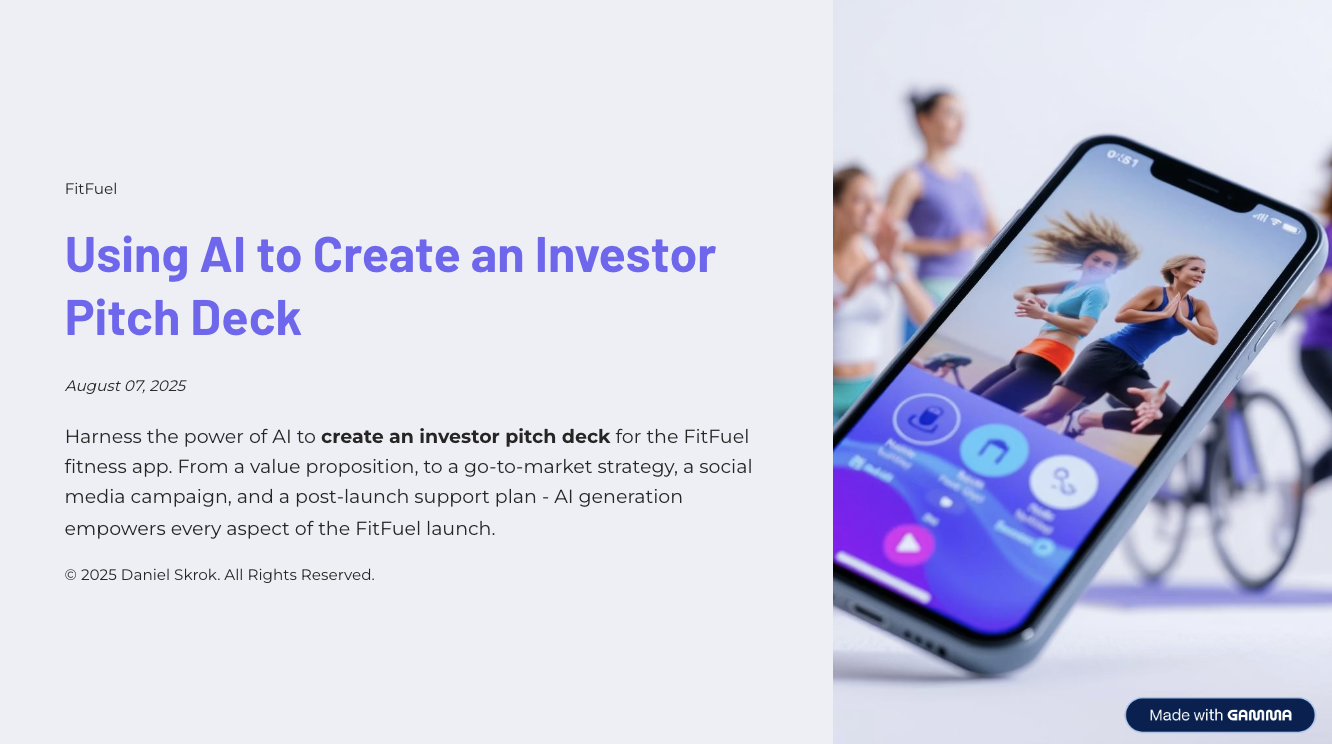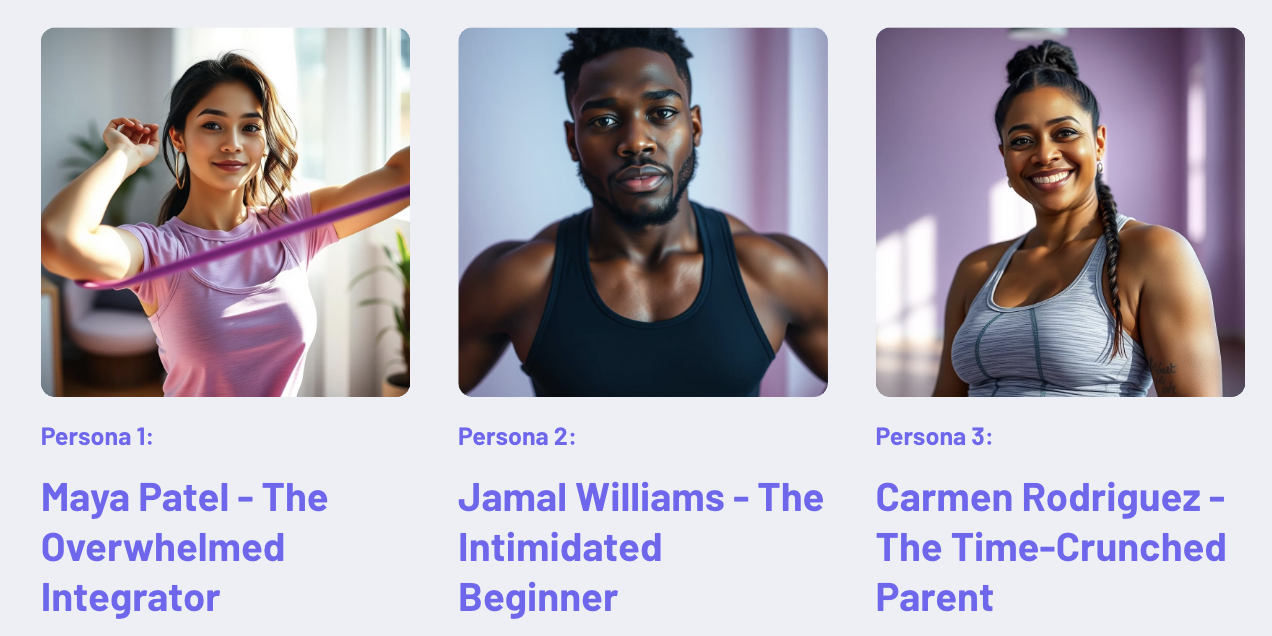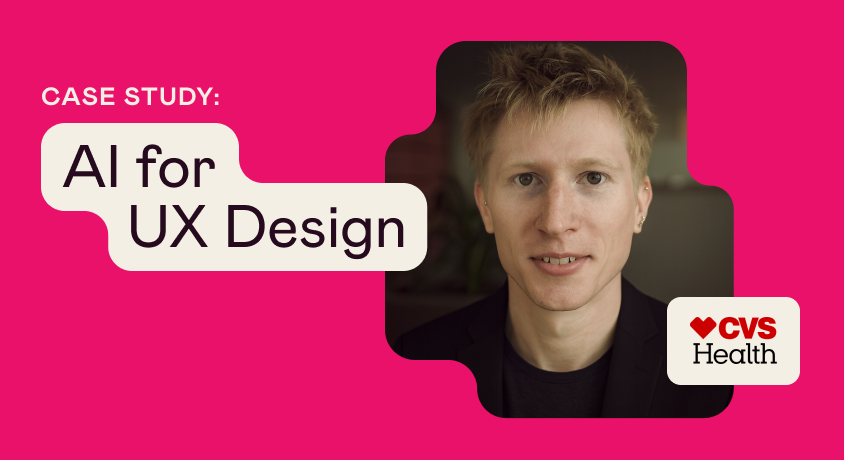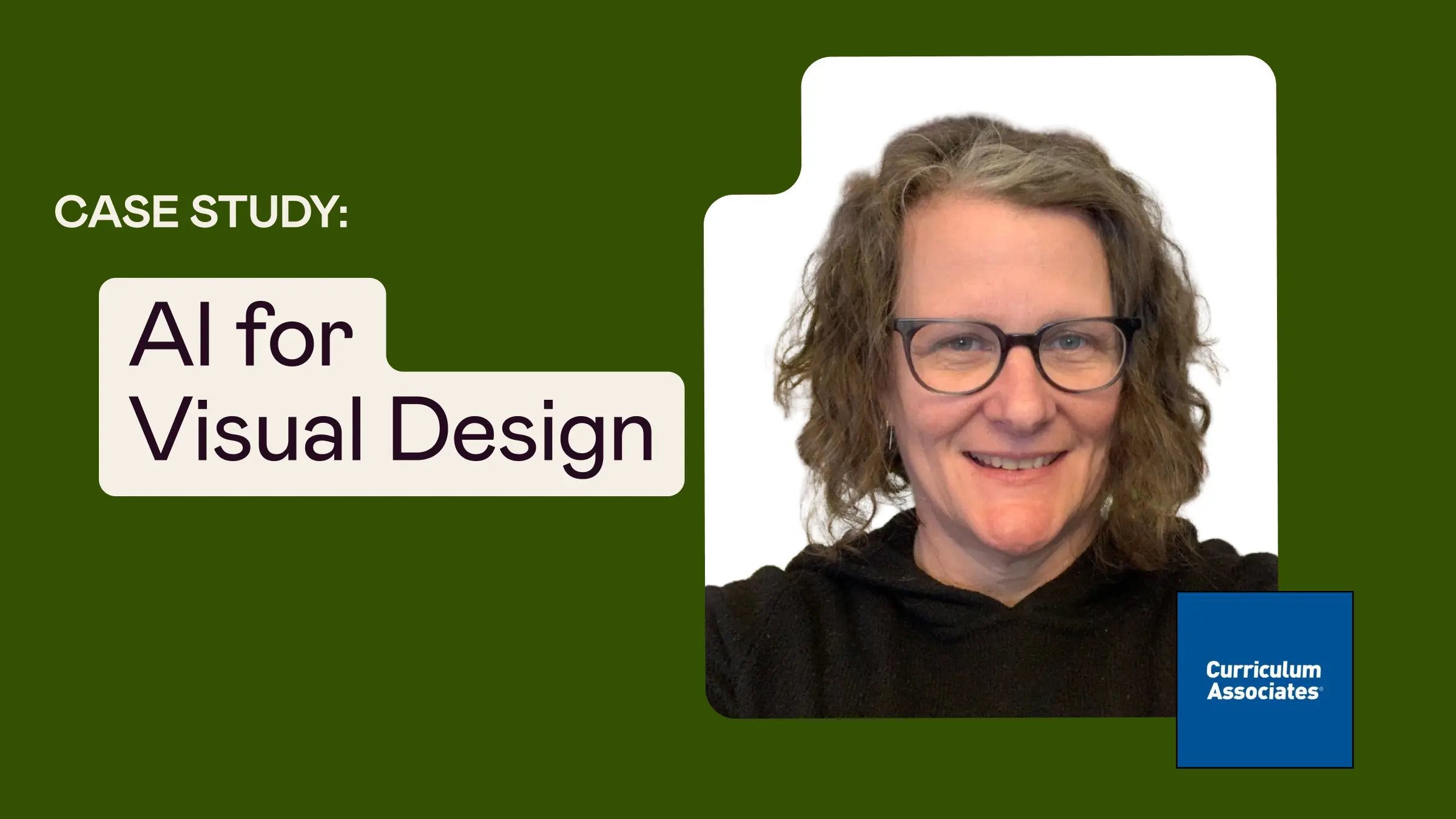After more than a decade in design leadership, Daniel Skrok found himself drawn to the biggest shift shaping the industry: artificial intelligence. As a Principal Experience Designer at CVS Health, he was already exploring how AI might support his team’s workflows, but he wanted a structured way to deepen his knowledge and apply it directly to his practice.
“I wanted to not only understand the foundations of AI, but also get hands-on experience integrating it into my workflow,” Daniel says. “Confidence was a huge goal for me—being able to speak about AI with clarity, and to use it effectively.”

That led him to enroll in Designlab’s AI for UX Design course, where he found a balance of live lectures, mentor-led peer sessions, and practical projects that helped turn curiosity into capability.
Learning the Language of AI
Daniel came into the course with a few clear goals:
- Build confidence speaking about AI, from understanding LLMs and generative tools to articulating their value
- Identify opportunities for efficiency in his day-to-day design practice
- Learn how to build an AI tool stack, evaluating which tools to use and when
- Develop stronger prompting skills to generate useful, context-aware outputs
- Bring learnings back to his team at CVS Health through ongoing knowledge-sharing
By the end of the program, Daniel felt he had accomplished each of these. “I definitely feel much more confident speaking about AI and knowing which tools to use,” he reflects. “And more importantly, I can show my team how to integrate it responsibly and effectively.”
From Hours to Minutes: Real-World Efficiency
One of Daniel’s biggest takeaways was discovering how AI could reduce time spent on repetitive or foundational tasks. Using tools like Claude for competitive analysis, Gamma for generating slide decks, and Stitch for early UI mockups, he cut processes from hours down to minutes.
“Something that used to take me two hours now takes me two minutes,” he says. “That frees me up to focus on the strategy, the storytelling, and the nuances of design.”

At CVS Health, he’s applying this efficiency in ways that align with the company’s privacy-first governance approach. He’s used Writer AI to generate draft copy that replaces lorem ipsum in prototypes, and AI-assisted user stories to speed up documentation. “Even small changes make a huge difference in day-to-day workflows,” he explains.
Something that used to take me two hours now takes me two minutes. That frees me up to focus on the strategy, the storytelling, and the nuances of design.
A Collaborative Learning Experience
For Daniel, the course structure was key to its impact. Weekly live lectures set the stage for each module, while smaller mentor-led peer groups created space to apply concepts in real time. His mentor, Elizabete Staerfeldt, facilitated exercises in Figma and FigJam that gave students the chance to experiment with prompts, run design audits, and even co-create go-to-market strategies on the spot.
“It was such an inviting space to ask questions and test things out,” Daniel recalls. “Having that peer community made the learning so much more engaging than doing it alone.”
Sharing the Value with His Team
Looking ahead, Daniel’s focus is on bringing what he’s learned back to his colleagues at CVS Health. Throughout the course, he captured key insights and takeaways in a Miro board, which he’s now shaping into a workshop for his team.
My executive director asked me to find opportunities where we can streamline even further. The course gave me the tools to do that.
His goal: to not only show what’s possible, but to help identify new ways AI can support CVS’s design processes moving forward.
“My executive director asked me to find opportunities where we can streamline even further,” he says. “The course gave me the tools to do that—both in my own work and for my team.”
Staying a Lifelong Learner
As AI continues to evolve rapidly, Daniel sees Designlab’s AI for UX Design course as a foundation for ongoing growth. “The curriculum was always up to date, which is so important,” he notes. “And it reminded me that being a lifelong learner isn’t optional in this field—it’s a necessity.”
For Daniel, AI isn’t about replacing designers, but about helping them focus on the work that matters most. “It really does give me back time to think more strategically and creatively,” he says. “And that’s invaluable.”



.svg)








.png)





